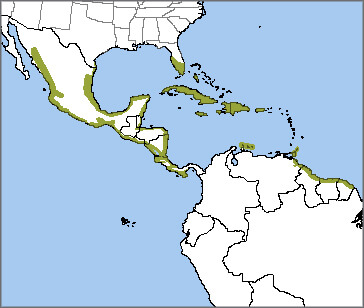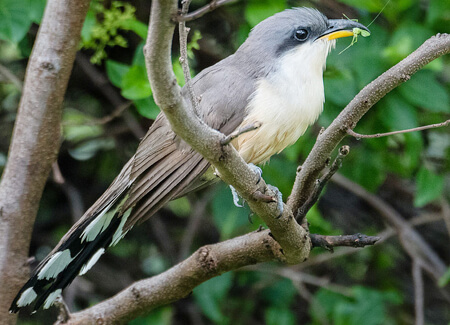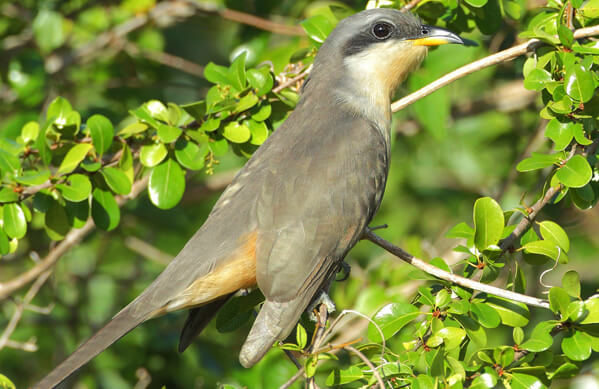 Never seen the Mangrove Cuckoo? You're not alone: The Mangrove Cuckoo is among the most secretive and poorly known of North American birds. It's difficult to detect because of the species' preference for impenetrable mangrove swamps and its tendency to remain silent outside of the breeding season.
Never seen the Mangrove Cuckoo? You're not alone: The Mangrove Cuckoo is among the most secretive and poorly known of North American birds. It's difficult to detect because of the species' preference for impenetrable mangrove swamps and its tendency to remain silent outside of the breeding season.
Within the United States, this tropical bird can be found only in dense mangroves along the southern coasts of Florida. There, along with White-crowned Pigeon, the birds use undisturbed mangrove habitat for nesting and foraging. Habitat loss and fragmentation, particularly in Florida and the Caribbean, are major threats, and climate change also puts some of this bird's low-lying habitats at risk.
Sign up for ABC's eNews to learn how you can help protect birds
Outside of its small range in Florida, the Mangrove Cuckoo is widespread from northern Mexico south through the West Indies and Central America to South America. Across this wide range, the species can be found in a variety of lowland habitats, often away from water and its namesake mangroves.
Silent Hunter
The Mangrove Cuckoo tends to forage quietly within the tree canopy, hopping or walking from branch to branch rather than flying. Much like its close relative the Yellow-billed Cuckoo, the Mangrove Cuckoo hunts using the "sit and wait" approach, remaining stock-still for long periods, then quickly snatching up prey that wanders within its reach.
The birds eat caterpillars, grasshoppers, moths, and other insects, as well as small frogs, berries, and small fruits. Mangrove Cuckoos will even depredate the eggs and nestlings of smaller birds.

Mangrove Cuckoo by Rich Sajdak
Tree-toed Bird
Like other cuckoos, Mangrove Cuckoos have a "zygodactyl" foot arrangement, with two toes facing forward and two backward — rather than the three-forward, one-back arrangement of most other birds.
This specialized foot is an adaptation that helps tree-dwelling birds grasp branches.
Many other birds have zygodactyl feet, including woodpeckers such as Lewis's Woodpecker, owls such as Flammulated Owl, and tropical species including barbets and toucans.
Maximizing Mangrove Habitats
Although there is scant information on Mangrove Cuckoo population trends, the species appears to be declining in the United States. Partners in Flight estimates a global breeding population of 200,000; of these, about 40 percent are found in Mexico.
Along with species such as Reddish Egret, Wood Stork, and Snail Kite, Mangrove Cuckoo is an important priority for the Atlantic Coast Joint Venture (ACJV). This ABC-supported partnership of 17 states and commonwealths spans from Maine south to Puerto Rico and works to accomplish habitat conservation for native birds in the Atlantic Flyway of the United States.
Donate to support ABC's conservation mission!



















































